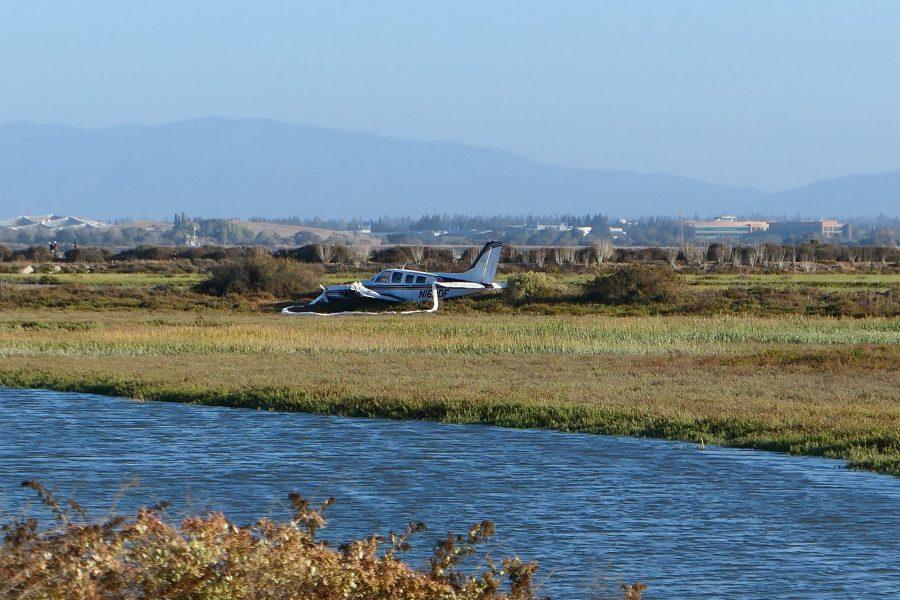A small plane crashed into the Baylands near Palo Alto Airport at 1:50 p.m. on Monday, Sept. 13.
According to a statement from a Federal Aviation Agency spokesperson, the aircraft — a twin-engine Beechcraft Baron 58P built in 1982 — crashed with only the pilot on board.
The plane struck power lines along the shoreline during its descent. The crash did not cause any known outages in Palo Alto according to PG&E’s map of outages. Crews were at the Baylands on Tuesday fixing the power lines.
Deputy Fire Chief Kevin McNally said the pilot emerged from the accident without any significant injuries. The pilot reported experiencing mechanical failures, according to a post by the Palo Alto Fire Department.
According to the flight-tracking website FlightAware, the flight lasted only three minutes. The plane took off, turned right towards the East Bay, and then sharply turned to return towards the airport. The plane’s altitude did not exceed 500 feet.
The Palo Alto Airport control tower on LiveATC.net recorded the pilot requesting to return to the airport shortly after takeoff after saying the plane’s right engine was experiencing problems.
One minute later, the pilot declared an emergency, announcing that both engines had lost power plus fuel in one engine.
Certified Flight Instructor Michael Gross, another pilot who flies at the Palo Alto Airport, said it’s important to know what to do in the event of an engine failure under 800 feet.
“I would fly mostly straight ahead, dodge whatever obstacle, and land in the mud,” Gross said.
Gross said that attempting to return to the airport shortly after takeoff like the pilot did in this case can be dangerous.
“The big risk in trying to return to the airport (if you are under 800 feet) is that if you get slow enough to stall the aircraft and it crashes into the ground, that’s when fatal accidents happen,” Gross said. “It is a high risk maneuver.”
McNally said the plane experienced only minor damage during the crash.
“The plane lost a wing and had some damage to the prop(ellers)s,” McNally told The Campanile. “Given the situation, it was in relatively good shape. There was some fuel spilled. Our personnel along with clean up crews were on scene after the incident to contain and clean up that fuel.”
Because of the little amount of fuel spilled, the crash is unlikely to cause long-term environmental effects on the Baylands.
“If (the fuel spillage) is small and containable, (crews) should be able to circle it with (containment) booms and sort of vacuum it out of there,” environmental science teacher Nicole Loomis said. “A small accident that is easily cleaned up is not going to have much of an impact on the wildlife.”



Marina Teramond @ NMPL • Sep 24, 2021 at 1:36 am
Unfortunately, our world is full of different kinds of disasters and its quantity doesn’t stop increasing. Everyday a lot of people around the world are in emergency situations and this plane crashes so frustrated me because I have heard about it for the first time. Of course, the fact that the pilot did not receive significant injuries and the plane is in not a critical condition pleases me. I absolutely agree with the flight instructor that it is so important to be aware of the methods of action in the situation when the engine fails under 800 feet because it can appear at any moment and you always need to be prepared, remaining alert and cautious without endangering yourself and your passengers.
tj • Jan 8, 2022 at 4:34 pm
why does it frustrate you? are you a pilot? you comment has no point…..just sayin…